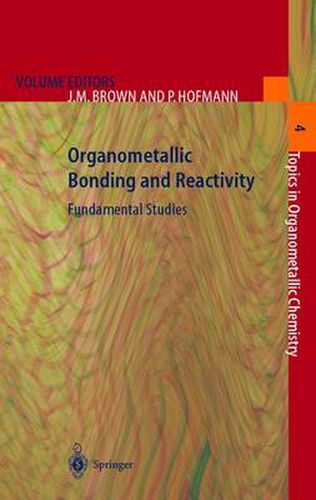Readings Newsletter
Become a Readings Member to make your shopping experience even easier.
Sign in or sign up for free!
You’re not far away from qualifying for FREE standard shipping within Australia
You’ve qualified for FREE standard shipping within Australia
The cart is loading…






This title is printed to order. This book may have been self-published. If so, we cannot guarantee the quality of the content. In the main most books will have gone through the editing process however some may not. We therefore suggest that you be aware of this before ordering this book. If in doubt check either the author or publisher’s details as we are unable to accept any returns unless they are faulty. Please contact us if you have any questions.
General The making and breaking of carbon-metal bonds is fundamental to all the p- cesses of organometallic chemistry and moreover plays a significant role in - mogeneous as well as heterogeneous catalysis. This rather blunt statement - phasises the extent to which a proper understanding of the structure, energetics and reactivity of C-M bonds is at the core of the discipline. In order to accept it, a proper definition of the terms involved is required. Quite simply we define the metal-carbon bond in its broadest sense to embrace carbon linked to transiti- metals, lanthanides and actinides, and main group metals. We do not dist- guish between formally covalent single or multiple bonding on the one hand and q-bonding on the other. In the studies to be described in the following chapters, the emphasis will be on transition metal complexes and insofar as the fun- mentals come under scrutiny, simple metal alkyls or related species (metal al- nyl, alkynyl, aryl, or allyl) will play an emphatic part. The central role of metal alkyls and their congeners and especially the role of their metal carbon linkage in homogeneous catalysis may be appreciated by considering some key reaction steps leading to their formation or breakdown. There follows a few prominent examples of transition metal mediated stoichiometric or catalytic processes: - In homogeneous hydrogenation of double bonds, the stepwise reaction of an q2-coordinated alkene with dihydrogen gives first an alkyl metal hydride, and then the decoordinated alkane by elimination.
$9.00 standard shipping within Australia
FREE standard shipping within Australia for orders over $100.00
Express & International shipping calculated at checkout
This title is printed to order. This book may have been self-published. If so, we cannot guarantee the quality of the content. In the main most books will have gone through the editing process however some may not. We therefore suggest that you be aware of this before ordering this book. If in doubt check either the author or publisher’s details as we are unable to accept any returns unless they are faulty. Please contact us if you have any questions.
General The making and breaking of carbon-metal bonds is fundamental to all the p- cesses of organometallic chemistry and moreover plays a significant role in - mogeneous as well as heterogeneous catalysis. This rather blunt statement - phasises the extent to which a proper understanding of the structure, energetics and reactivity of C-M bonds is at the core of the discipline. In order to accept it, a proper definition of the terms involved is required. Quite simply we define the metal-carbon bond in its broadest sense to embrace carbon linked to transiti- metals, lanthanides and actinides, and main group metals. We do not dist- guish between formally covalent single or multiple bonding on the one hand and q-bonding on the other. In the studies to be described in the following chapters, the emphasis will be on transition metal complexes and insofar as the fun- mentals come under scrutiny, simple metal alkyls or related species (metal al- nyl, alkynyl, aryl, or allyl) will play an emphatic part. The central role of metal alkyls and their congeners and especially the role of their metal carbon linkage in homogeneous catalysis may be appreciated by considering some key reaction steps leading to their formation or breakdown. There follows a few prominent examples of transition metal mediated stoichiometric or catalytic processes: - In homogeneous hydrogenation of double bonds, the stepwise reaction of an q2-coordinated alkene with dihydrogen gives first an alkyl metal hydride, and then the decoordinated alkane by elimination.